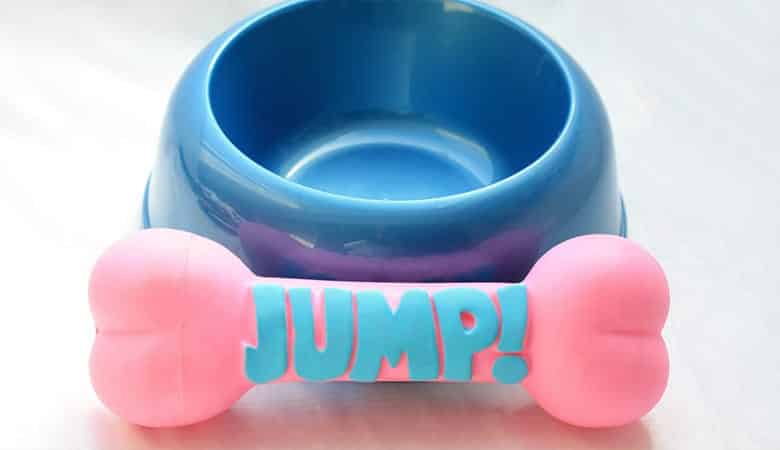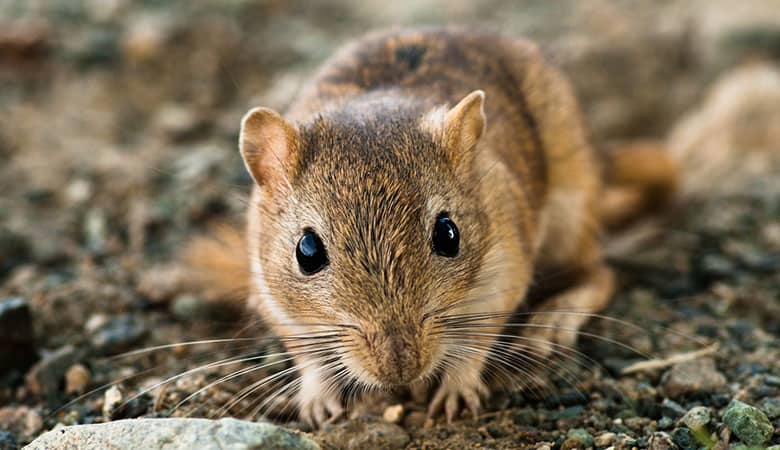The use of sand in cages is essential for well-exercised, entertained, and clean gerbils. But there are a few more things that you should always watch out for in these situations.
Here is a look at how sand and gerbils connect in choosing a perfect cage setup.
Can You Put Sand in a Gerbil Cage?
Yes. Gerbils are by nature, dust, sand, or ash bathers. Out in the outdoors, gerbils taking a sand bath in the deserts is always a sight to see.
They clean themselves by doing rolls and spins in the small pockets of sand on the ground. This is an activity that gives these small rodents a chance to stay clean that even sounds the opposite you would expect.
Naturally, the typical conscious would call for water-baths for your gerbil. But water-baths are quite dangerous compared to sand baths. With sand baths, gerbils get to scrub away dirt from their fur and the skin. That helps keep the gerbil coat in shape while removing any harmful dirt from the skin surface.
The case is yet different from water-baths, which can often lead to fatal situations. For example, water-baths can lead to leaching away of vital molecules from your gerbil’s fur. These molecules are essential in helping the pet regulate body temperature in its natural arid habitat.
Still, water-baths can be necessary if the gerbils do poop a lot or have something harmful stuck to the far. Situations such as having your gerbil coming into contact with soap or oil are examples of emergencies that would call for using water-baths. If you are not aware, then it’s best not to try it out at first. Such a scenario needs you to contact an exotic veterinarian for the best way forward to handle the water-bath.
Setting up a Gerbil Sand Bath

Since gerbils are natural arid species, it’s best to make the sand bath as natural as possible to allow for regular use. That calls for a sand bath setup which needs a list of supplies to grab for your gerbil. On the top of the list, here is what to include
A Gerbil Bathtub
A bathtub or gerbil sand bath container acts as a spot where they can roll, and spin around inside the sand. There are many options to choose from with some even recommending hamster containers as replacements. However, a gerbil litter box needs to be large enough, which is the opposite of hamster baths.
Also, take into consideration the material of the gerbil containers since they make the underlying difference. Plastic, for instance, can be damaged by gerbils through frequent chewing of potential openings. This leaves ceramic and glass bathtubs as the best options to pick from the list. On paper, gerbil sand bath containers can include
Should you do this at night? What do gerbils do at night anyways? Let’s talk about it here.
Pet bowls

Dog bowls for large breeds such as the Great Dan offer a perfect alternative as gerbil sand bath containers. They are quickly available, sturdy, and with large enough space for your gerbil.
Jars
Tall container jars are also great, considering you can leave your gerbil inside the setup sand bathing. Mason jars are an example of a sturdy jar container that can host a gerbil sand bathing. However, be sure not to pick one with a small opening or one that can tip over.
Small Pet Baths
Luckily enough, pet stores offer special purpose-built baths for small pets and animals. There are a variety of options available, ranging from ceramic to plastic versions for convenience.
Tupperware Storage Containers
Plastic Tupperware containers are cheap and available options found around the household. Although they can be large enough to fit the gerbil, they can also be less sturdy since they are plastic. This could see the gerbil tip the container over, especially if not filled appropriately.
Best Sand Bath For Gerbils
While gerbils do love sand, the surprising fact is that not all types of sand are good to use. The unique part comes with how much the sand needs to be of top quality and clean. In addition to this, it has to be filtered to ensure its safe sand for gerbils.
As such, this eliminates the use of sand taken from the beach. Such sand has high levels of waste and dirt, which can fatally damage the gerbil with skin problems. Builder’s sand is also not appropriate, considering there are additives present and coarse enough to damage your gerbils.
However, it’s fortunate that there are commercial options available to use as gerbil sand. In most cases, these alternatives can include a good number of pet sand available from pet stores or retailers.
The Kaytee Chinchilla bath sand is among the best-recommended gerbil sand beddings even though it’s for chinchillas. Another option can be the reptile sand for gerbils, which comes as the Zoo Med Reptisand brand. It’s a desert white fine sand made for desert reptile species but also working great for gerbils.
On the flip side, you can also try out using original children’s play sand from the sandboxes. The sand is often held to a high standard to prevent any potential harm to kids, meaning it would work great for gerbils in their cages. However, take note to avoid dyed sand since it may have harmful chemicals that can react with your gerbil’s fur.
The dangers of dyed sand are not the sole precautions to watch with your gerbil’s sand bath. There is a danger of using calcium sand, which can cause a respiratory upset in small pets such as gerbils. Besides, gerbils tend to think that calcium sand tastes great, which can have gerbils eating bathing sand a lot. The results can see your gerbil fatally develop health problems such as with the bladder and kidney.
How to Clean and Change Gerbils sand Bath

Despite your best efforts, a gerbil’s sand bath will get dirt and poop overtime. While you have the option of throwing the whole sandlot out, it’s best to learn how to handle the sterilization, cleaning, and changing the sand bath.
The first step remains to have the gerbil’s sand bath go through sterilization even before use. That is necessary since there is little chance of knowing what exactly is safe to use. Even the pet sand or sand from children’s sandboxes can present a danger to your gerbil, and you can never be too careful.
The sterilization takes place even before the setup is brought up. It’s essential not to skip this step since it kills any bugs or bacteria present in the sand bath. For the gerbil sand bedding to undergo sterilization, the steps include
- Get the pet or play sand inside a large bowl.
- Heat a sizeable amount of water till boiling point and pour into the sand.
- Let the hot mixture sit for 5-10 minutes. Stir to loosen any dirt present, then drain the water.
- Get the sand and spread it on a baking sheet.
- Bake the sand in a thin layer at 180 degrees Fahrenheit. Scoop and turn the sand till completely dry for around 30 minutes
- Get the sand to cool completely, then pour into your gerbil’s sand bath.
After a while, gerbils will accumulate poop in their sand baths alongside the typical dirt, fur, and debris from their cages. Here, a dirty sand bath won’t do you or the gerbil any good, and it’s best to lean it before things get out of hand. On matters cleaning, the simple steps ran through the following;
- Get a separate container and pour the sand.
- Clean and wash the bath container with warm water and a mild disinfectant, safe enough to use even on food areas.
- Rinse and dry out the bath container to remove any disinfectant traces. You can pick an air-blow or use a lint-free towel for the drying.
- Use a sieve or fine-mesh strainer to filter the sand. Get a separate container to discard any dirt or debris from the sand.
- Get a storage container and place the sieved sand for use next time your gerbil needs a sand bath.
- Repeat this at least once a week or whenever you feel the gerbil’s sand bath is dirty enough.
By now, you can tell sand is an essential part of a gerbil’s lifestyle. For this reason, it’s best to have your gerbil sand bath facts at your fingertips. Hopefully, our in-depth read gives you the front foot on the laydown of gerbil sand baths.

